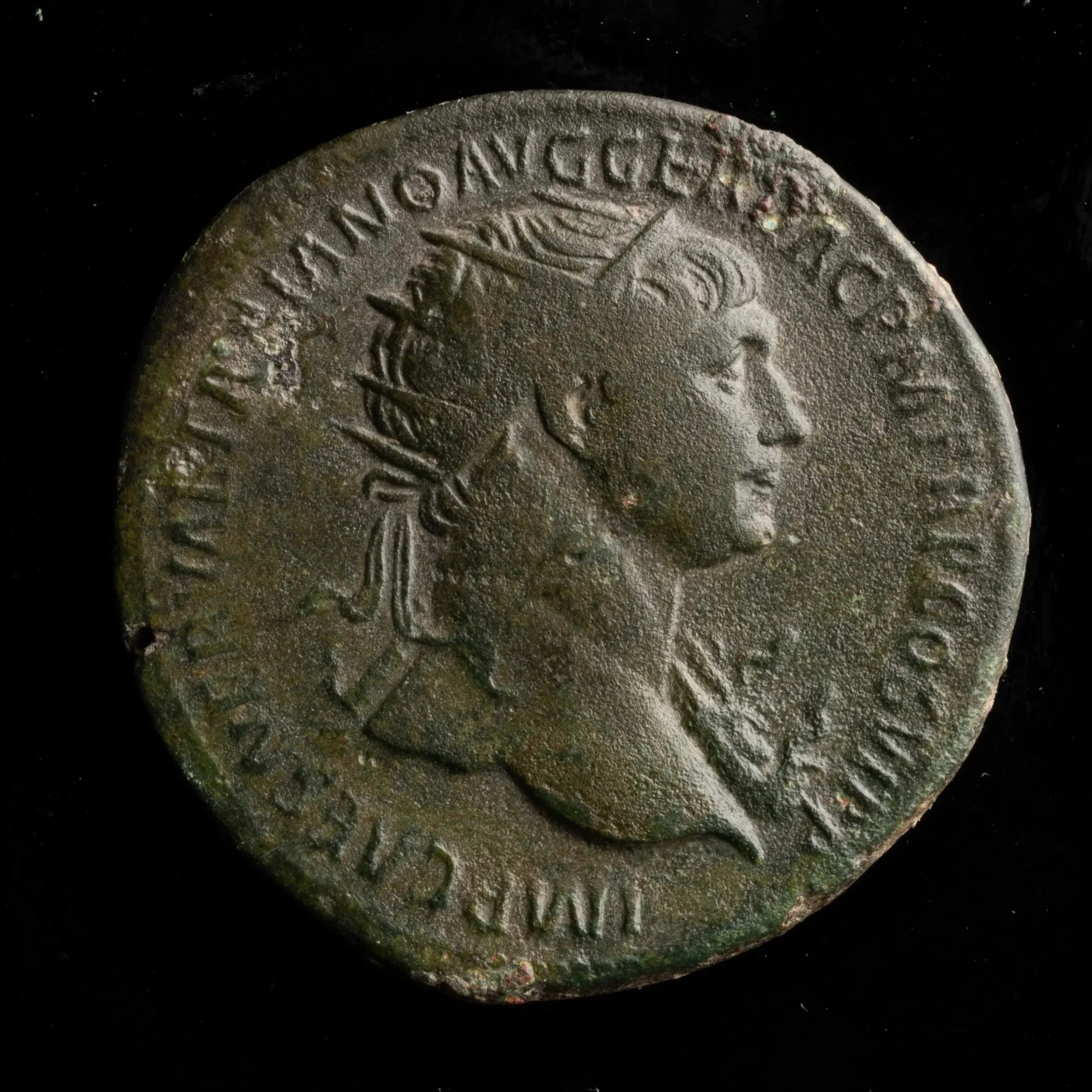 Image 1 of 2
Image 1 of 2

 Image 2 of 2
Image 2 of 2



Byzantine Bronze 40 Nummi of Heraclius (1,400 years ago)
This bronze coin was issued during the joint reign of Emperor Heraclius and his son Heraclius Constantine in the Byzantine Empire between 610-641 AD. It was minted in Constantinople (modern-day Istanbul, Turkey), the capital of the Byzantine Empire.
Coin Description:
Front side: Emperor Heraclius holding a long cross and his son Heraclius Constantine holding a globus cruciger (orb topped with a cross) standing facing forward, with a cross above them.
Back side: Large letter M (representing the denomination of 40 nummi), with a cross above, date marked as "E" across the field, and "CON" below (abbreviation for Constantinople mint).
Technical Details:
Material: Bronze
Denomination: 40 Nummi (also called a follis)
Size: 22mm diameter
Weight: 5.63 grams
Mint: Constantinople
Date: 610-641 AD
Catalog Reference: Sear Byzantine (SB) 810
Historical Significance:
This coin was issued during the tumultuous reign of Heraclius, who faced devastating wars with the Sassanid Persian Empire and later the early Islamic conquests. The father-son imagery symbolizes dynastic continuity during a period of crisis for the Byzantine Empire. The religious imagery reflects the crucial role of Christianity in Byzantine identity at a time when the empire was losing significant territories in the Middle East and North Africa, while the continued use of standardized bronze coinage demonstrates the resilience of the Byzantine economic system despite military setbacks.
This bronze coin was issued during the joint reign of Emperor Heraclius and his son Heraclius Constantine in the Byzantine Empire between 610-641 AD. It was minted in Constantinople (modern-day Istanbul, Turkey), the capital of the Byzantine Empire.
Coin Description:
Front side: Emperor Heraclius holding a long cross and his son Heraclius Constantine holding a globus cruciger (orb topped with a cross) standing facing forward, with a cross above them.
Back side: Large letter M (representing the denomination of 40 nummi), with a cross above, date marked as "E" across the field, and "CON" below (abbreviation for Constantinople mint).
Technical Details:
Material: Bronze
Denomination: 40 Nummi (also called a follis)
Size: 22mm diameter
Weight: 5.63 grams
Mint: Constantinople
Date: 610-641 AD
Catalog Reference: Sear Byzantine (SB) 810
Historical Significance:
This coin was issued during the tumultuous reign of Heraclius, who faced devastating wars with the Sassanid Persian Empire and later the early Islamic conquests. The father-son imagery symbolizes dynastic continuity during a period of crisis for the Byzantine Empire. The religious imagery reflects the crucial role of Christianity in Byzantine identity at a time when the empire was losing significant territories in the Middle East and North Africa, while the continued use of standardized bronze coinage demonstrates the resilience of the Byzantine economic system despite military setbacks.










